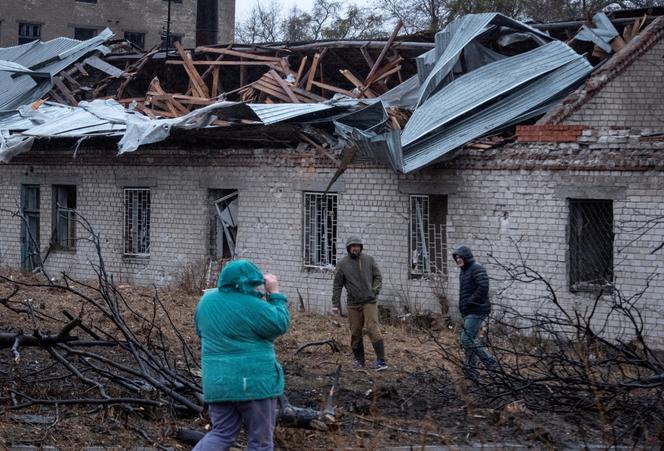


It's a first in the history of military nuclear power. On Thursday, November 21, Russia fired a medium-range ballistic missile (IRBM) designed in principle exclusively to carry a nuclear warhead, into a theater of war. It was a new missile named "Orechnik," according to Moscow. Until now, this type of weapon had only been tested in trials.
The Russian missile fell on a factory in the town of Dnipro, in eastern Ukraine. According to Le Monde's information, it was fired from the Kapustin Iar base, located on the northern Caspian Sea. This site is often used by the Russians for their strategic ballistic missile tests. The Kremlin justifies this shot by the fact that Ukraine has used several American long-range missiles (ATACMS) and British Storm Shadow missiles to strike various military targets on its territory.
According to the Pentagon, the Russian missile that fell on Dnipro falls into the IRBM category, with a range of 3,000 km to 5,500 km, rather than the intercontinental missile (ICBM) category, as experts initially believed on Thursday. It was not loaded − hence the absence of an explosion on the ground − but by firing it, the Russians have taken a step forward in their escalation with the West.
In view of the high risk of misunderstanding, and therefore of retaliation and nuclear escalation, Russia said it had warned the US of its launch. "The alert was sent automatically 30 minutes before the launch," Kremlin spokesperson Dmitry Peskov said on Thursday.
"The US was briefly notified before the launch via nuclear risk reduction channels," Pentagon deputy spokesperson Sabrina Singh confirmed to the press.
According to ABC News, quoting an official source, in recent days the US had informed Ukraine and its allies of Russia's possible use of such a weapon, to help them prepare. According to this official, Moscow probably possesses only a "handful" of these experimental missiles. The source also confirmed that the missile belonged to the "MIRV" category (Multiple Independently Targetable Reentry Vehicles), in other words, missiles with multiple warheads that can hit several targets simultaneously.
The firing of the IRBM comes as a surprise to the West, as Russia has not, officially, had this type of weapon in its arsenal until now. It is also a major turnaround, given that, until 2019, the development of this type of missile, capable of reaching NATO member countries in Western Europe, was prohibited by the Intermediate Nuclear Forces (INF) Treaty. However, in 2019, the Russians and Americans withdrew from this treaty.
You have 55.9% of this article left to read. The rest is for subscribers only.
